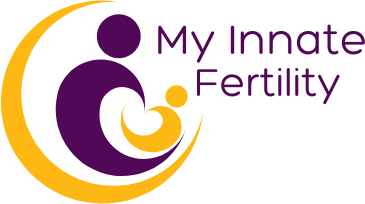Navigating the path to conception can be complex, and understanding your fertility window is crucial for increasing your chances of becoming pregnant. My Innate Fertility emphasizes the importance of knowledge and preparation in the fertility journey. This blog explores the concept of the fertility window, explaining what it is, how to identify it, and how you can optimize your chances of conception during this critical time.
What is the Fertility Window?
The fertility window, often called the “fertile window,” is the period during a woman’s menstrual cycle when pregnancy is most likely to occur. This window typically spans six days: the five days leading up to ovulation and the day of ovulation itself. Sperm can survive in the female reproductive tract for up to five days, and an egg remains viable for about 24 hours after it is released.
The Importance of Timing
Understanding the timing of the fertility window is key because it represents the time each month when a woman is most fertile. Intercourse during this window significantly increases the chances of sperm meeting egg, which is essential for conception.
Age-Related Considerations in the Fertility Window
The fertility window is also influenced by age, which can affect the regularity and predictability of ovulation. Generally, women are most fertile between their late teens and late 20s, with fertility gradually declining in the 30s, particularly after the age of 35. However, it’s important to note that every woman is different, and these ages are not definitive markers for everyone.
Many women experience healthy pregnancies well into their late 30s and early 40s, although the frequency of ovulation may decrease, and the likelihood of conception per cycle is lower compared to younger years. While we consider age, our personalized approach helps accommodate the unique aspects of your reproductive health. Age can be a factor, but it does not dictate absolute limits on fertility.

Identifying Your Fertility Window
Identifying your fertility window can be straightforward for some women, but it can also be challenging, especially if your cycles are irregular. Here are some methods to help determine the most fertile days:
Tracking Menstrual Cycle
Keep a record of your menstrual cycle lengths to identify patterns and predict ovulation. A regular cycle, which lasts about 28 days, typically leads to ovulation around day 14. However, cycle lengths can vary widely from woman to woman.
Monitoring Ovulation Signs
Pay attention to physical signs of ovulation, such as changes in cervical mucus, which becomes clear and stretchy like egg whites when you’re most fertile. Some women also experience ovulation pain, known as mittelschmerz, which can be a useful indicator.
Using Ovulation Prediction Kits
Ovulation prediction kits (OPKs) can provide a more precise identification of your fertile window. These kits test your urine for the surge in luteinizing hormone (LH) that occurs 24 to 36 hours before ovulation.

Maximizing Fertility During Your Fertility Window
Once you have identified your fertility window, there are several ways to maximize your chances of conception during this time.
Timing Intercourse Strategically
Having intercourse every day or every other day during the fertile window can maximize your chances of conception. This frequency ensures that sperm are present in the fallopian tubes when the egg is released.
Maintaining Optimal Health
Overall health impacts fertility, so maintaining a balanced diet, regular exercise, and a healthy weight are important. Additionally, avoid smoking, excessive alcohol consumption, and stress, as these can negatively affect fertility.
Support on Your Fertility Journey
Understanding and making the most of your fertility window can be a game-changer in your journey toward parenthood. At My Innate Fertility, we are dedicated to providing you with the guidance and support you need to navigate this journey successfully. Whether you’re just starting to plan for pregnancy or have been trying for a while, our team is here to help you understand your body’s cues and optimize your fertility.
Don’t hesitate to reach out if you’re looking for personalized assistance or have questions about your fertility window. Contact My Innate Fertility today to schedule a consultation and take a proactive step toward expanding your family.

